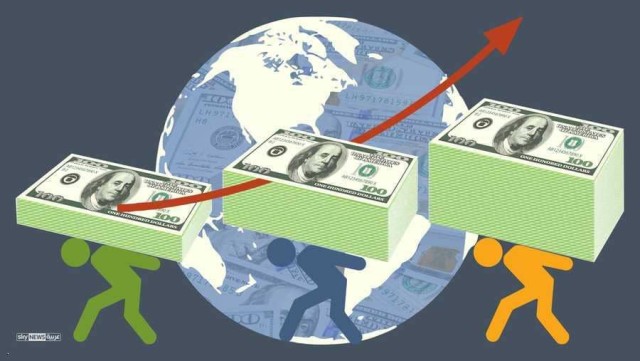Global debt last year reached a record level of $226 trillion, equivalent to 256% of global GDP, affected by the crisis caused by the Covid-19 epidemic, according to what the International Monetary Fund announced on Wednesday, and this represents an increase of 28%, which is the highest Since World War II.
According to Arab Net, Vitor Gaspar and Paolo Midas, who are responsible for budget affairs at the International Monetary Fund, and Roberto Pirelli, an economist at the Fund in the government borrowing blog, accounted for just over half of this increase and also reached a record level of 99%, of global GDP. The private debt of non-financial companies and households has also reached new highs.
Government debt alone represents about 40% of the total global debt, the largest share since the mid-1960s, they explained.
The accumulation of public debt is the direct result of two major economic crises, the global financial crisis in 2008 and the COVID-19 pandemic.
In 2020, the sharp increase in this debt was justified by the need to protect lives, preserve jobs and avoid a wave of bankruptcies, according to experts who explained that if governments had not acted, the social and economic consequences would have been devastating.
Speaking Wednesday in front of the French research center Cercle de Zieconomist, chief economist at the Organization for Economic Cooperation and Development Lawrence Boone stressed that if there is a debt issue, it is primarily due to the management of public money in years, and sometimes decades, preceding the Covid crisis.
It is time to manage our public finances differently in favor of priorities, citing, for example, investments in the health, education and climate sectors that I considered insufficient today.
But experts from the International Monetary Fund also noted that this level of debt increases vulnerabilities, especially that financing conditions in the future will be less favorable with the expectation of higher interest rates in the context of high inflation.
They concluded that high levels of indebtedness limit, in most cases, the ability of governments to support recovery and the ability of the private sector to invest in the medium term.









































